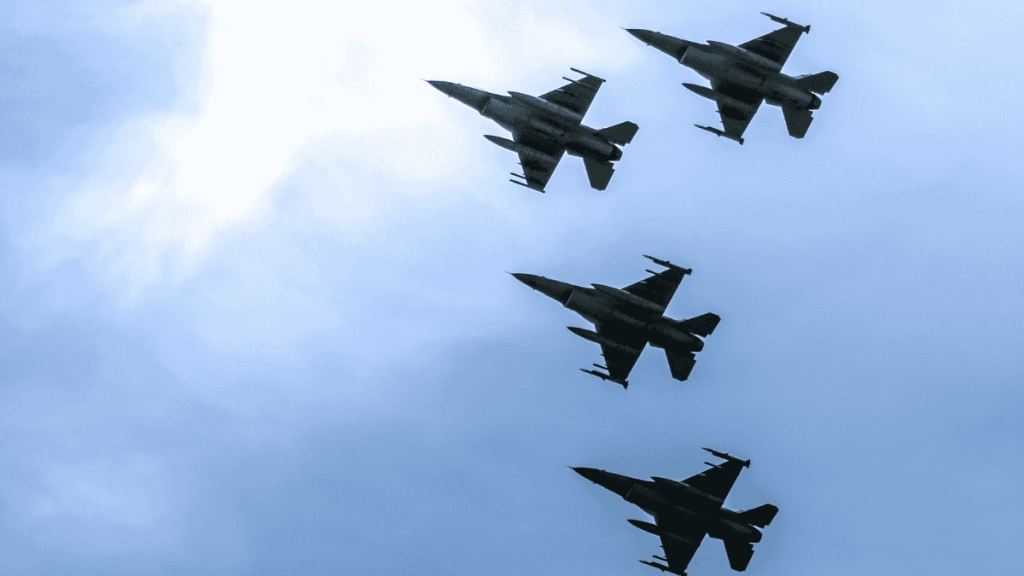The Prime Minister’s announcement of a new indigenous air defence system has set an ambitious goal of shielding the nation from aerial attacks. Even as the Sudarshan Chakra project echoes India’s growing push towards self-reliance in defence, strategic questions remain, writes Ritwik Sharma
What is the Sudarshan Chakra mission?
On Independence Day, Prime Minister Narendra Modi announced that India will develop an indigenous air defence system called Sudarshan Chakra by 2035. The missile shield, which alludes to the divine discus of Lord Krishna, will aim to foil enemy attacks as well as hit back. “By 2035, all the important places of the nation, which include strategic as well as civilian areas, like hospitals, railways, any centre of faith, will be given complete security cover through new platforms of technology,” Modi said.
At present, India boasts three S-400 long-range surface-to-air missile systems that were developed by Russia and which played a crucial role in neutralising Pakistani drones and missiles fired towards more than 15 Indian cities following Operation Sindoor in May. The Indian Air Force had revealed that it had downed Pakistani aircraft at a distance of roughly 300 km. While the S-400’s maximum missile engagement range is 400 km, the system’s radar can detect aerial threats from up to 600 km away.
How will it add to existing systems?
The Sudarshan Chakra Mission will require building a multi-layered framework that integrates advanced surveillance, cyber protection, and physical safeguards to protect Indian citizens and infrastructure from enemy strikes. While India already operates the Integrated Air Command and Control System (IACCS), which proved its prowess during the May conflict by neutralising Pakistani missile attempts for nearly 100 hours, the Sudarshan Chakra aims to create a stronger, more comprehensive shield. Although the PM did not spell out details, India’s enhancement of its stock of ballistic and cruise missiles to strike back could include new missiles like the Pralay, which has a range of 500 km, Nirbhay (1,000-km range, capable of subsonic land-attack), and the BrahMos supersonic cruise missile (800 km). The Sudarshan Chakra defence system is likely to be developed along with the IACCS.
Global examples of missile defence
If India Fulfils its ambition, it could join nations like Israel which possess advanced air defence systems. Israel’s best-known missile shield is the Iron Dome, an all-weather system designed to intercept short-range rockets and also shells and mortars at a range of 4-70 km from the missile launcher. The Israel Defence Forces report a 90% success rate for the Iron Dome which has been operational since 2011. Earlier this year in the US, which has multiple air and missile defence systems, President Donald Trump proposed a “Golden Dome”. The project, estimated at $175 billion, aims to counter threats from next-generation missiles from land, sea, and space. Meanwhile, Russia has the A-135 anti-ballistic system which protects its capital, Moscow, and other major cities. It also has the S-400 that can counter intermediate-range ballistic missiles. China has a diverse range of air defence systems, while Pakistan too has a tiered system that includes domestically produced and imported components.
Defence spend and cost factor
India has expanded its defence budget from Rs 2.53 lakh crore in FY14 to Rs 6.81 lakh crore in FY26. According to 2024 data released by the Stockholm International Peace Research Institute (SIPRI), India’s defence expenditure is the fifth largest among countries, with $86 billion. Although it’s nearly nine times more than Pakistan, it is far behind China which spent $314 billion. Also, despite this year’s Budget recording the sharpest annual jump (9.53%) in recent years in terms of allocation, the defence spending as a share of GDP is still low at 1.9%. An EY report in June recommended 3%. For comparison, the US, which is the largest spender, allocates ~3.2% of its GDP to defence. According to Colonel Rajendra Bhaduri (retd), in an article for a digital platform, “conservative estimates suggest full deployment across India’s major population centres would require $15-20 billion in initial investment, with annual operating costs exceeding $3 billion” for the Sudarshan Chakra project to take off.
Self-reliance push vs strategy
The new project will involve collaboration between top scientific and defence research agencies, the military, and innovators from the private sector. It is also likely to be more than a shield and offer precision counterstrike capacities and incorporate anti-cyber warfare measures. The PM’s announcement also bore the theme of self-reliance as the country aims to achieve greater autonomy in defence manufacturing under the Make in India programme. For instance, the BrahMos, a joint venture with Russia, is largely indigenised now.
However, India is the second largest importer of major arms, only behind Ukraine, according to SIPRI. Colonel Bhaduri has argued that the Sudarshan Chakra mission’s aim to set up a nationwide shield is practically impossible as no country has attained such coverage. He has also flagged an enormous economic burden, while advising “strategic restraint and targeted conventional force improvements” as better alternatives.

